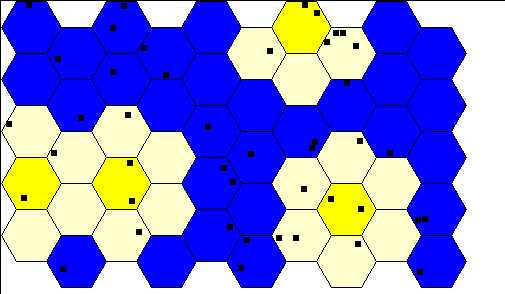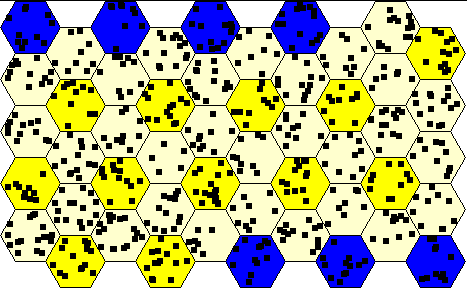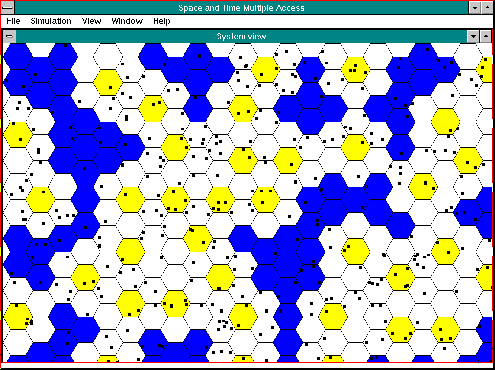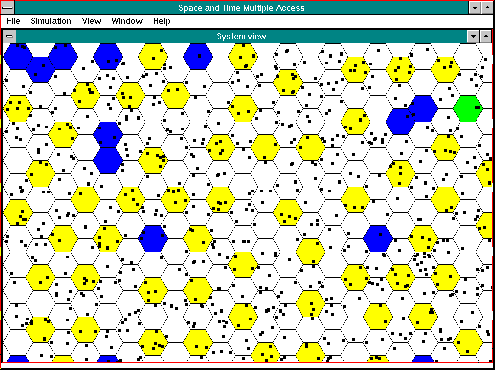
 |
JPL's Wireless Communication Reference WebsiteChapter: Network Concepts and Standards
|
Space Time Reservation Multiple Access (STRMA) is a method to allow multiple portable
terminals to access a
communications infrastructure. It combines
frequency reuse
(in space or area) with
multiple access. STRMA applies digital speech interpolation (DSI).
The goal is to better support
bursty multi-media traffic.
STRMA can be interpreted as a spatial
extension of the Packet
Reservation Multiple Access (PRMA).
PRMA is a framed access scheme with
frames of a fixed number of slots. If a terminal has a series of packets or speech segments to
transmit, it competes for access in any free slot. If it successfully captures the base station,
the terminal gains reservation in the corresponding slots of the next frames, until it releases
the reservation.
In PRMA, adjacent cells use different carrier frequencies according to a cellular reuse plan, but in STRMA we synchronize base stations and terminals at slot level. Time slots are common to all cells, and all cells use the same carrier frequencies. However, if a terminal gains a reservation in one cell for certain time slots, the base stations of the first tier of surrounding cells inhibit all other terminals to use the same time slots. Hence, reservations occur not only in time domain, as in PRMA, but also in space.
In the STRMA protocol, the reservation of the time slot is not restricted to the cell in which the user is located. The timeslot will also be reserved in surrounding cells to avoid collisions of packets transmitted in those surrounding cells in the same timeslot.
For the STRMA system a frame consist of Ns timeslots. When a reservation is made only the cells in the first tier surrounding the user obtaining the reservation, are also reserved. So two active users are always separated by one cell. In a fixed reuse pattern such a separation compares to a 3-cell reuse pattern. So in every cell we have 1/3 of the available bandwidth which compares to having Ns/3 timeslots per frame.

Cellular Network. This figure illustrates a possible sample of an STRMA process, during one particular time slot, with idle (blue), busy (yellow) and inhibited cells (white).
 Figure 4
Figure 4
This figure illustrates a sample of an STRMA process with (very) heavy traffic, during one particular time slot, with idle (blue), busy (yellow) and inhibited cells (white).

Much to the surprise of the investigators, STRMA appears to have strong "self organizing" properties. Under very heavy traffic, the slot contents converge to a dense solid reuse pattern, much a "crystal" structure.

The simulation program is available on this CD ROM.